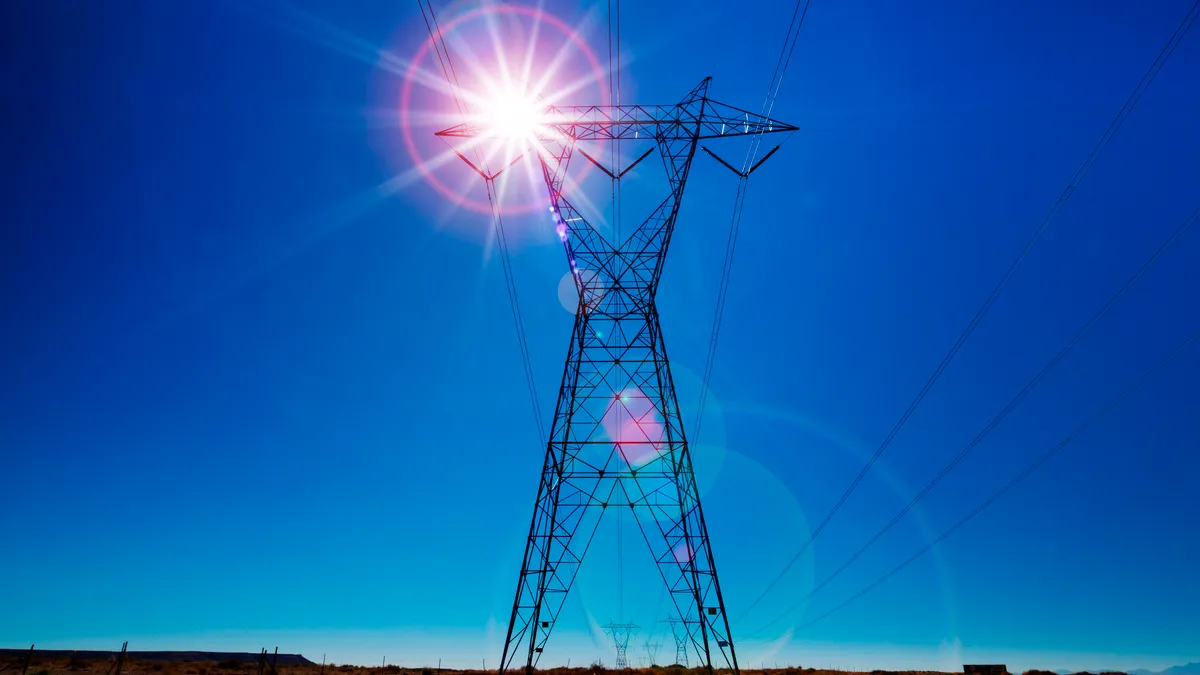The United States — especially the middle of the country — needs significant amounts of new regional and interregional transmission to meet existing and future requirements, according to a report released Monday by the Department of Energy.
An expanded transmission network can bolster grid reliability and resilience, provide congestion relief, offer access to new generation sources and accommodate load growth, DOE said in its triennial needs assessment.
Capacity expansion studies show overall regional transmission capacity needs to increase 64% by 2035 to meet moderate load growth coupled with high clean energy growth, driven by existing state and federal legislation, DOE said. DOE examined other scenarios, including high load growth.
Under the modeling, the largest relative growth of regional transmission by 2035 compared with the 2020 system will be needed in the the Electric Reliability Council of Texas area (140% median increase), followed by the Southwest Power Pool footprint (119%), the Midcontinent Independent System Operator’s northern and central regions (112%), the Mountain states (90%) and the Southeast (77%) to meet moderate load and high clean energy growth scenarios.
Interregional transfer capacity must grow by 114% to meet future moderate load and high clean energy growth, DOE analysts found.
The areas that require the largest relative growth in interregional transfer capacity by 2035 to meet moderate load and high clean energy growth scenarios are between MISO’s southern region and SPP (414% median increase), New England and New York (255%), MISO’s northern and central regions and SPP (175%), and between the PJM Interconnection and MISO (156%), DOE’s analysis found.
The results are similar to a draft study DOE released earlier this year, but based on an even more thorough review of existing studies, according to Rob Gramlich, president of Grid Strategies, a transmission-focused consulting firm.
However, Gramlich said he expects a high clean energy and high load growth scenario is most likely given current trajectories in electricity use, which the report found would require a quadrupling of interregional delivery capacity.
The transmission paths needing expansion identified by the report can guide industry and regulatory transmission initiatives, as well as DOE’s financing and other tools, he said.
While the report indicates a need for a major transmission buildout, the report found that transmission construction has slowed since around 2015, corroborating analysis in a recent Grid Strategies report, Gramlich said.
DOE will use the findings in the transmission needs study to help select national transmission corridors and review proposed transmission projects that may be eligible for funding, such as three projects the department selected on Monday for potential capacity purchases.
Alternative transmission solutions such as grid enhancing technology, or GETs, and energy storage can complement traditional transmission infrastructure, but cannot totally replace the need for additional infrastructure, according to DOE.
Because GETs cost so little and can be deployed in months, they can support grid reliability and save customers money while new transmission is planned and built, said Julia Selker, executive director of the WATT Coalition, a group that advocates for alternate technologies such as dynamic line ratings.
“In the long term, wide deployment of GETs will ensure that ratepayers get the maximum value out of all transmission grid infrastructure, in addition to providing operators system-wide flexibility and visibility to improve reliability,” Selker said.
DOE will discuss its transmission needs study during a Nov. 8 webinar.















